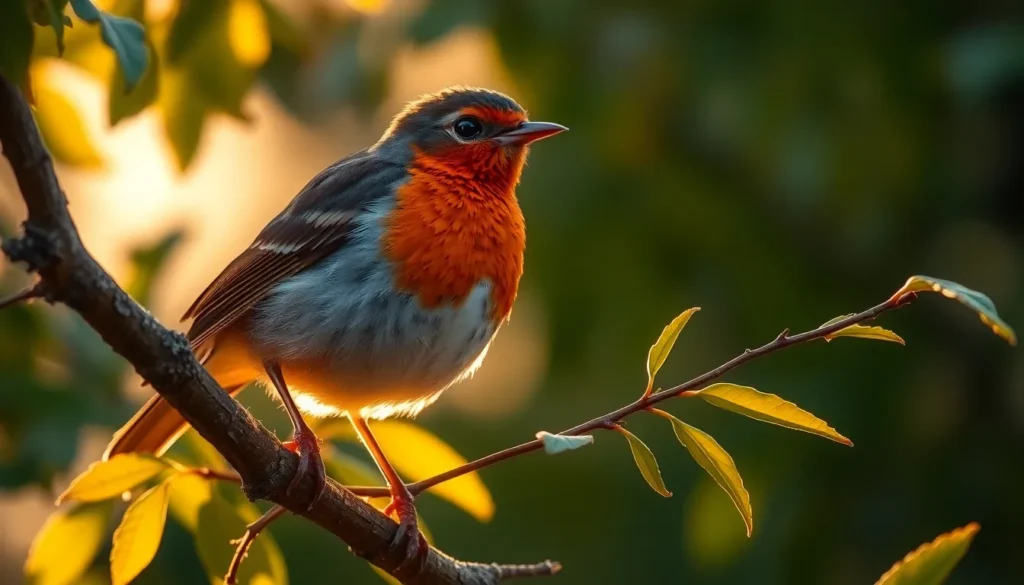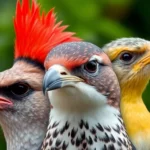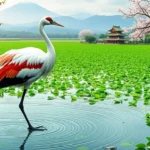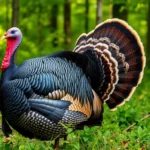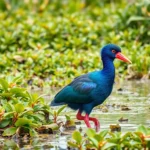We’ve all paused to admire the simple yet captivating sight of a bird perched gracefully on a tree branch. This timeless scene represents one of nature’s most peaceful moments – a perfect harmony between wildlife and their natural habitat that’s inspired artists, photographers and nature enthusiasts for centuries.
Birds on branches aren’t just beautiful to observe; they’re fascinating examples of evolutionary adaptation at work. From the way different species grip branches with their specialized feet to how they choose the perfect perch for safety and visibility, there’s incredible science behind these everyday moments we often take for granted.
Whether you’re a birdwatcher hoping to improve your identification skills, a photographer seeking that perfect shot, or simply someone who appreciates nature’s quiet beauty, understanding the relationship between birds and their chosen perches opens up a whole new industry of appreciation for the wildlife around us.
Capture the Perfect Bird on Branch Photo with Proper Lighting
Lighting transforms ordinary bird photography into extraordinary art that captures the essence of these graceful creatures in their natural habitat. We’ll explore essential techniques that help you master the interplay between light and shadow for stunning bird on branch compositions.
Golden Hour Photography Techniques
Golden hour delivers the most flattering light for bird photography when the sun sits low on the horizon during the first hour after sunrise or the last hour before sunset. Warm, soft illumination during these periods reduces harsh contrasts and creates a magical glow that enhances feather details and branch textures.
Position yourself so the golden light falls at a 45-degree angle to your subject to achieve optimal results. This angle illuminates the bird’s features while creating gentle shadows that add depth and dimension to the composition. Side lighting reveals intricate feather patterns and creates separation between the bird and its perch.
Expose for the bird rather than the background to maintain proper detail in your main subject. Golden hour’s forgiving light allows you to capture both highlight and shadow detail without losing information in either area. Manual mode gives you complete control over exposure settings during these rapidly changing light conditions.
Managing Harsh Midday Shadows
Midday photography presents challenges with intense overhead sun creating unflattering shadows under the bird’s beak, eyes, and body. Open shade becomes your best friend during these hours, offering even illumination without the harsh contrast of direct sunlight.
Seek birds perched under tree canopies or in naturally shaded areas where diffused light provides even coverage across your subject. These locations eliminate the raccoon eye effect caused by deep shadows while maintaining enough light for sharp images. Overcast days create nature’s giant softbox, producing beautifully even lighting for bird photography.
Fill flash serves as an effective tool for reducing shadow contrast when you must shoot in bright conditions. Set your flash to negative exposure compensation between -1 to -2 stops to subtly fill shadows without creating an artificial look. This technique preserves the natural appearance while lifting detail from shadow areas.
Using Natural Backlighting
Backlighting creates dramatic silhouettes and rim lighting effects that separate birds from busy backgrounds with stunning visual impact. Position the sun directly behind your subject to achieve a glowing outline that emphasizes the bird’s shape and posture against the branch.
Expose for the bird rather than the bright background to maintain detail in your subject while allowing the background to naturally overexpose into pleasing tones. This technique works exceptionally well with birds that have distinctive profiles or interesting wing positions. Spot metering on the bird ensures accurate exposure for your main subject.
Translucent feathers become luminous when backlit, creating an ethereal quality that adds artistic appeal to your images. Morning mist or atmospheric haze enhances backlighting effects by adding layers of depth and mystery to your compositions. These conditions occur frequently during early morning hours when many birds are most active.
Choose the Right Camera Settings for Bird on Branch Photography

Camera settings make the difference between mediocre and stunning bird on branch photography. We’ll guide you through the essential technical adjustments that transform ordinary perched bird shots into gallery worthy images.
Optimal Aperture for Sharp Focus
Aperture selection determines how much of your bird subject remains in crisp detail. We recommend starting with f/5.6 to f/8 for most bird on branch scenarios since these settings provide excellent subject sharpness while maintaining reasonable background separation.
Wider apertures like f/2.8 or f/4 create beautiful bokeh effects that isolate birds from cluttered branch backgrounds. These settings work particularly well when photographing smaller songbirds perched on thin twigs where background separation enhances the overall composition.
Narrower apertures from f/11 to f/16 bring both bird and branch into sharp focus for documentary style wildlife photography. We use these settings when the branch structure adds important context to the bird’s behavior or when shooting larger birds where environmental details matter.
Depth of field preview helps us evaluate focus distribution before capturing the shot. This feature shows exactly which parts of the bird and branch will appear sharp at your chosen aperture setting.
Shutter Speed for Motion Control
Shutter speeds of 1/500th second or faster freeze most bird movements including small head adjustments and wing flutters that occur even when birds appear stationary on branches. We rarely go slower than this baseline for handheld bird photography.
Active birds require speeds of 1/1000th second or higher to capture sharp images during preening grooming or feeding behaviors. Cardinals and blue jays often make quick movements that demand these faster shutter speeds for optimal results.
Slower speeds from 1/250th to 1/400th second work for completely motionless birds resting on sturdy branches but require steady hands or tripod support. These settings allow for lower ISO values in challenging light conditions.
Intentional motion blur at 1/60th to 1/125th second creates artistic effects when birds move between branches or adjust their perching positions. We use this technique sparingly for creative bird on branch compositions.
ISO Settings for Various Light Conditions
| Light Condition | ISO Range | Image Quality | Best Use Cases |
|---|---|---|---|
| Bright sunlight | ISO 100-400 | Excellent | Golden hour bird portraits |
| Open shade | ISO 400-800 | Very good | Overcast day photography |
| Dense forest canopy | ISO 800-1600 | Good | Woodland bird species |
| Dawn/dusk | ISO 1600-3200 | Acceptable | Early morning activity |
| Deep shadows | ISO 3200+ | Grainy but usable | Emergency situations only |
Modern cameras handle ISO 800 to 1600 with minimal noise making these settings our go to choices for bird on branch photography in mixed lighting conditions. We prefer slightly higher ISO over motion blur from slow shutter speeds.
Base ISO settings of 100 to 400 produce the cleanest images when sufficient light allows for proper exposure. These low ISO values capture fine feather details and natural branch textures without digital noise interference.
High ISO performance varies significantly between camera models so we test our equipment’s limits before important bird photography sessions. Some cameras produce acceptable results at ISO 6400 while others show excessive noise above ISO 1600.
Noise reduction software allows us to push ISO boundaries when capturing rare bird species or unique behavioral moments. We’d rather have a slightly grainy sharp image than miss the perfect bird on branch opportunity entirely.
Select the Best Equipment for Bird on Branch Shots
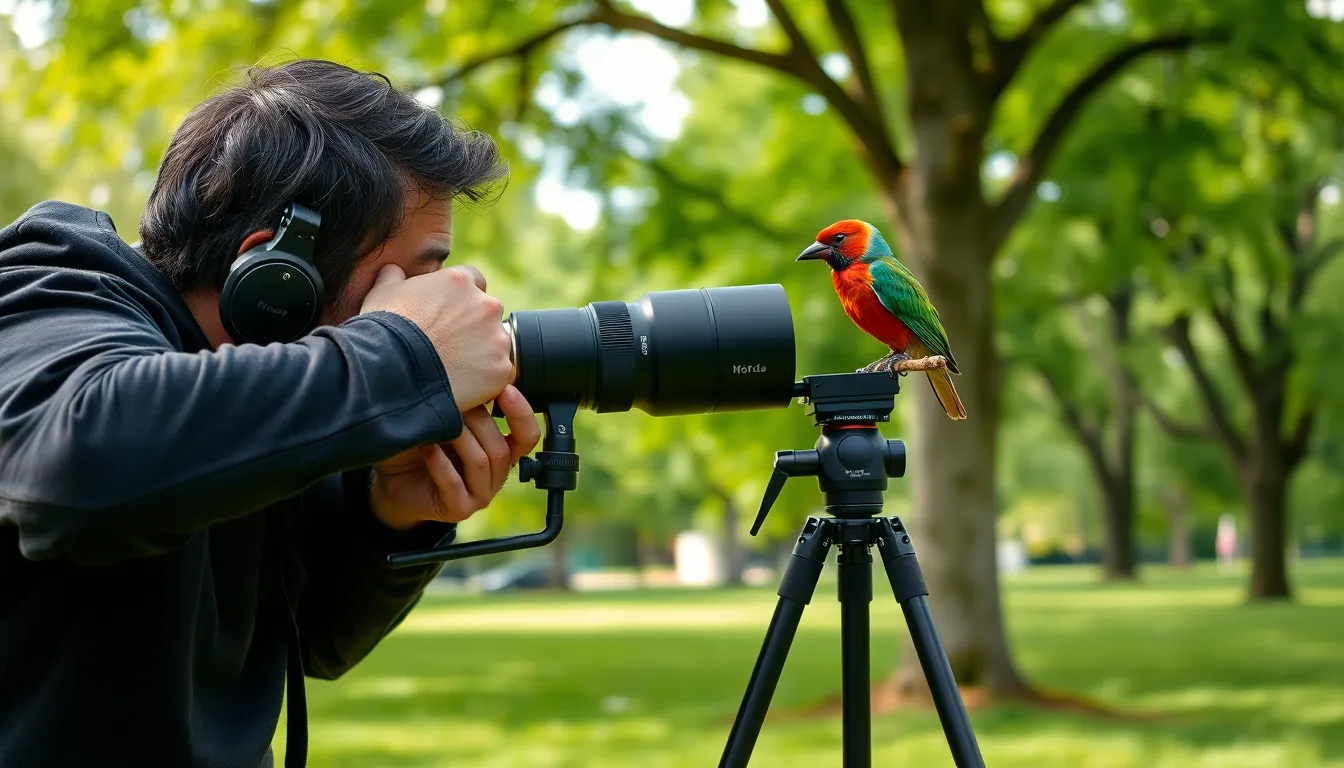
We need the right gear to transform our bird photography from snapshots into professional-quality images. Our equipment choices directly impact the sharpness, clarity, and artistic appeal of every bird on branch photograph.
Telephoto Lens Recommendations
Telephoto lenses ranging from 300mm to 600mm deliver exceptional results for bird on branch photography. We recommend starting with a 300mm f/4 lens, which offers excellent image quality at a reasonable weight. Canon’s EF 300mm f/4L IS USM and Nikon’s AF-S 300mm f/4E PF ED VR provide sharp images with effective image stabilization.
Prime lenses typically outperform zoom lenses in terms of sharpness and maximum aperture. We find that fixed focal length lenses like the 400mm f/2.8 or 500mm f/4 create stunning bokeh and exceptional detail. These professional-grade lenses cost significantly more but deliver unmatched image quality.
Budget-conscious photographers should consider 70-300mm or 100-400mm zoom lenses for versatility. We often use these lenses for beginners because they allow quick composition adjustments without changing position. Popular options include the Canon RF 100-500mm f/4.5-7.1L and Sony FE 200-600mm f/5.6-6.3 G OSS.
Tripod Stability for Sharp Images
Carbon fiber tripods provide the best balance of weight and stability for bird photography. We prefer tripods weighing 3-5 pounds that can support at least twice the weight of our camera and lens combination. Gitzo and Really Right Stuff manufacture excellent carbon fiber models that reduce vibration.
Tripod heads specifically designed for wildlife photography enhance our shooting experience. We recommend gimbal heads like the Wimberley WH-200 or fluid heads such as the Manfrotto 502AH for smooth tracking movements. Ball heads work adequately but limit our ability to follow bird movements smoothly.
Proper tripod technique eliminates camera shake during critical moments. We always extend the thickest leg sections first and avoid raising the center column unless absolutely necessary. Wind conditions require us to hang our camera bag from the center hook to add stability.
Camera Body Features That Matter
High-resolution sensors capture intricate feather details and allow important cropping flexibility. We find that cameras with 24-50 megapixel sensors like the Canon R5 or Sony A7R IV provide excellent detail for bird on branch compositions. Higher resolution helps when we can’t get close enough to fill the frame completely.
Advanced autofocus systems track birds even when they move slightly on branches. We rely on cameras featuring 400+ autofocus points and eye detection capabilities. Canon’s Dual Pixel CMOS AF and Sony’s Real-time Eye AF dramatically improve our focus accuracy rates.
Fast burst rates ensure we capture the perfect moment during brief bird interactions. We need cameras capable of shooting 10-20 frames per second to freeze wing movements or capture feeding behaviors. Buffer capacity matters equally, allowing us to shoot continuously without delays.
Weather sealing protects our investment during challenging outdoor conditions. We prefer camera bodies with comprehensive weather protection like the Nikon D850 or Canon R6 Mark II. Rain, humidity, and dust frequently threaten our equipment during extended field sessions.
Find Ideal Locations for Bird on Branch Photography
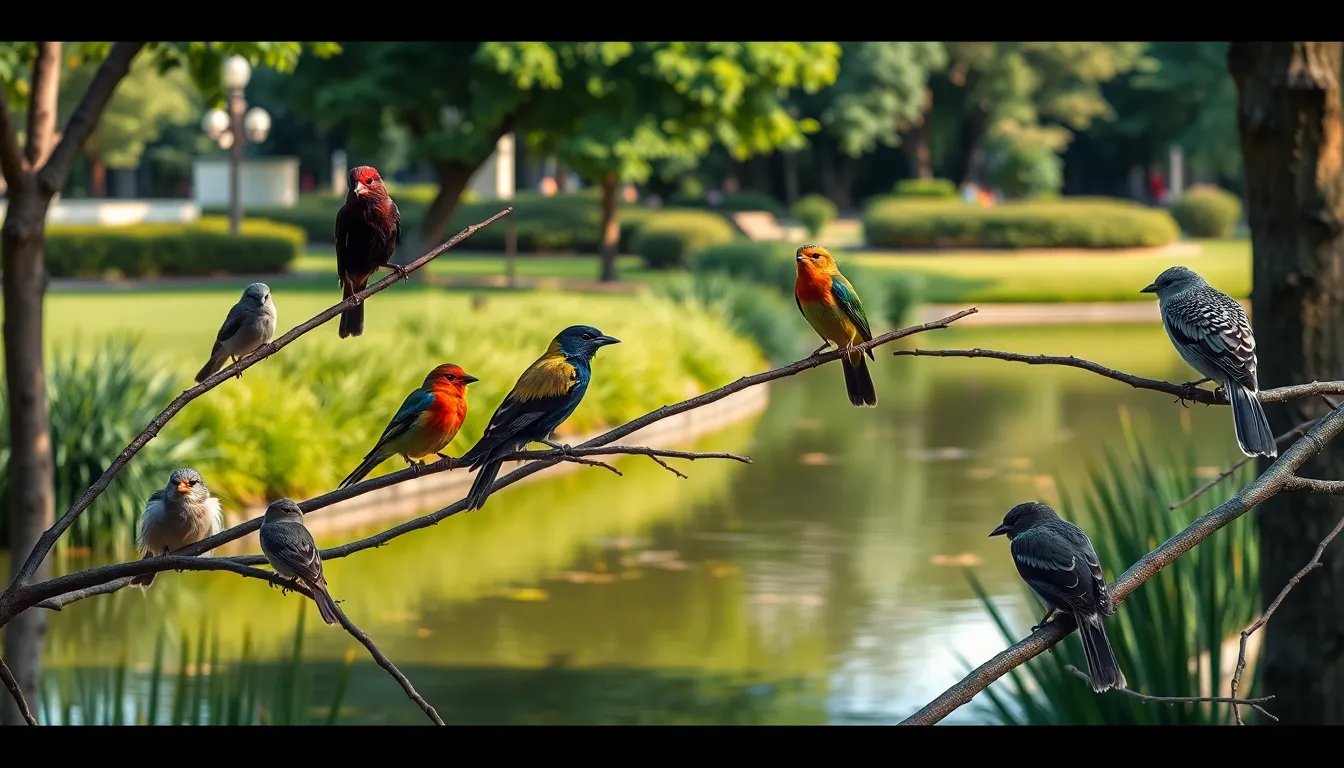
We’ve covered essential camera techniques and equipment, but success in bird on branch photography depends heavily on choosing the right locations.
Urban Parks and Gardens
Urban parks offer convenient access to diverse bird species without venturing far from civilization. City parks like Central Park in New York or Griffith Park in Los Angeles host over 200 bird species throughout the year. We recommend arriving early morning between 6:00 AM and 8:00 AM when birds are most active and feeding.
Gardens with native plants attract local bird populations more effectively than ornamental landscapes. Botanical gardens feature established trees with sturdy branches perfect for perching shots. Look for areas near water features like fountains or ponds where birds gather to drink and bathe.
Community gardens provide intimate settings with smaller birds like finches and wrens. Scout locations during different seasons since urban bird populations change dramatically with weather patterns. Spring migration brings warblers and vireos to city parks, while winter attracts northern species seeking shelter.
Natural Wildlife Habitats
Forest edges create prime opportunities for capturing birds transitioning between habitat types. We’ve found that woodland borders near meadows produce the highest variety of species within a single location. These transition zones support both forest dwelling birds and open country species.
Wetland areas attract water dependent birds like herons, egrets, and kingfishers. Position yourself near fallen logs or overhanging branches where these birds commonly perch while hunting. National wildlife refuges maintain boardwalks and observation blinds specifically designed for photographers.
Mountain regions offer access to specialized high altitude species. Target areas between 3,000 and 7,000 feet elevation where coniferous forests meet alpine meadows. These locations provide dramatic backdrops with snow capped peaks and pristine wilderness settings.
Seasonal Migration Hotspots
Spring migration corridors funnel millions of birds through exact geographic bottlenecks. Famous locations like Point Pelee in Ontario and High Island in Texas concentrate dozens of warbler species into small areas during peak migration weeks. We recommend booking accommodations months in advance for these popular destinations.
Fall migration extends over longer periods but offers exceptional opportunities for juvenile birds with pristine plumage. Hawk migration sites like Hawk Mountain in Pennsylvania provide elevated vantage points for photographing raptors on prominent perches. These locations feature established photography blinds and knowledgeable local guides.
Winter concentration areas gather normally dispersed species into accessible locations. Northern owl irruptions bring Arctic species south to areas like the Great Lakes region every few years. State birding organizations maintain hotline reports updating photographers on rare bird sightings and optimal viewing locations.
Master Composition Techniques for Bird on Branch Images

Strong composition transforms ordinary bird on branch photographs into captivating wildlife art. We’ll explore proven techniques that elevate your images from simple documentation to compelling visual stories.
Rule of Thirds Application
Positioning birds along the rule of thirds grid creates natural balance and visual interest in your compositions. We place the bird’s eye at one of the four intersection points where the imaginary grid lines meet, typically the upper left or upper right positions for maximum impact. This placement draws viewers immediately to the most expressive part of the bird while creating ever-changing tension throughout the frame.
Branch placement follows the same principle, with horizontal branches running along the lower or upper third line of your image. We avoid centering both the bird and branch, as this creates static compositions that lack visual energy. When photographing multiple birds on the same branch, we position the dominant subject at a power point while allowing secondary birds to fall naturally along the grid lines.
Vertical compositions work exceptionally well with the rule of thirds for tall, slender birds like herons or egrets. We align the bird’s body along a vertical third line while ensuring the head occupies an intersection point for optimal visual flow.
Negative Space Utilization
Empty areas around your bird subject create breathing room and emphasize the main focal point. We deliberately include clean backgrounds behind and around the bird, allowing the subject to stand out dramatically against uncluttered spaces. This technique works particularly well with birds perched on isolated branches against clear skies or smooth water surfaces.
Strategic negative space placement guides the viewer’s eye toward the bird while preventing visual confusion. We position the bird to one side of the frame, leaving approximately two-thirds of the image as clean background space. This asymmetrical balance creates more captivating compositions than centered subjects surrounded by equal amounts of space.
Seasonal environments offer varying negative space opportunities throughout the year. We capitalize on bare winter branches against snow or overcast skies for stark, minimalist compositions. Spring and summer photography benefits from selective focus that renders foliage into smooth, out-of-focus backgrounds that complement rather than compete with the bird.
Branch Placement and Framing
Natural branch lines serve as leading elements that direct attention toward your bird subject. We position branches diagonally across the frame to create ever-changing movement, avoiding perfectly horizontal or vertical placements that can appear static. These diagonal lines add energy and guide viewers through the composition toward the bird’s most important features.
Multiple branch systems create layered compositions that add depth and context to bird portraits. We use foreground branches slightly out of focus to frame the bird, while background branches provide environmental context without overwhelming the main subject. This layering technique mimics how we naturally see birds in their habitat.
Branch thickness and texture contribute significantly to overall composition strength. We prefer substantial branches that support the visual weight of larger birds, while delicate twigs complement smaller species like warblers or finches. Textured bark, interesting growth patterns, and natural curves enhance the artistic quality of bird on branch images without detracting from the wildlife subject.
Identify Common Bird Species Found on Branches

Now that we’ve mastered composition techniques and found ideal photography locations, we need to recognize the exact bird species we’ll encounter on branches. Understanding bird behavior and identifying key species helps us anticipate photo opportunities and adjust our approach accordingly.
Songbirds and Their Preferred Perches
American Robins favor horizontal branches at eye level, typically choosing sturdy oak and maple limbs that can support their 2.7-ounce weight. We often spot them on branches 4 to 8 feet from the ground, where they have clear views of potential threats and food sources.
Northern Cardinals prefer dense shrub branches and evergreen boughs, selecting perches that offer quick escape routes into thick foliage. Males display their vibrant red plumage most prominently on branches with dark bark backgrounds like pine and cedar.
House Finches gather in small flocks on thin, flexible branches of fruit trees and ornamental plants. These adaptable birds choose perches that bend slightly under their weight, creating ever-changing compositions as they feed and socialize.
Blue Jays select commanding perches on upper canopy branches, particularly favoring oak trees where they can survey their territory. Their intelligence shows as they choose branches that provide multiple escape routes and clear sightlines.
Chickadees demonstrate remarkable agility on small twigs and branch tips, often hanging upside down while foraging. We find them most active on branches less than 1 inch in diameter, where their lightweight 0.4-ounce bodies allow incredible acrobatic feeding.
Raptors and Their Hunting Spots
Red-tailed Hawks dominate tall, exposed branches that offer panoramic views of hunting grounds below. These powerful raptors choose sturdy limbs on mature trees, positioning themselves 50 to 100 feet above potential prey in open fields and meadows.
Cooper’s Hawks prefer concealed perches within tree canopies, selecting branches that provide cover while hunting songbirds. We spot them on horizontal branches 20 to 40 feet high, where they can launch surprise attacks through dense foliage.
American Kestrels use prominent perches on dead snags and isolated branch tips, choosing locations that maximize their hunting efficiency. These small falcons favor branches that extend beyond the main canopy, giving them unobstructed views of grasslands and roadside ditches.
Screech Owls select hollow branches and cavity entrances during daylight hours, blending perfectly with tree bark textures. We locate them on branches near natural tree holes, where their cryptic plumage provides exceptional camouflage against weathered wood.
Barred Owls occupy thick horizontal branches in mature forests, preferring perches 15 to 25 feet above forest floors. Their nocturnal hunting behavior means we find them resting motionless on broad limbs during daylight photography sessions.
Migratory Birds During Rest Periods
Warblers create colorful displays on flowering tree branches during spring migration, with species like Yellow Warblers favoring willow and birch perches. We photograph them most successfully on branches 6 to 15 feet high, where they actively forage for insects among fresh leaves.
Vireos prefer interior forest branches with dense leaf cover, selecting perches that offer protection during migration stopovers. Red-eyed Vireos commonly rest on branches 10 to 30 feet high, where they blend seamlessly with surrounding foliage.
Flycatchers choose exposed branch tips and dead snags that provide clear launching points for insect hunting. Eastern Phoebes and other flycatcher species select perches with unobstructed flight paths, typically on branches extending beyond tree crowns.
Thrushes seek low, sheltered branches near forest floors during migration rest periods. We find Hermit Thrushes and Wood Thrushes on branches 3 to 10 feet high, often in areas with dense understory vegetation that provides security.
Hummingbirds use thin, flexible branches that accommodate their tiny 0.1-ounce bodies, particularly favoring flowering trees and shrubs. Ruby-throated Hummingbirds select perches on branches less than 0.25 inches in diameter, creating delicate compositions that emphasize their diminutive size.
Apply Post-Processing Tips for Bird on Branch Photos
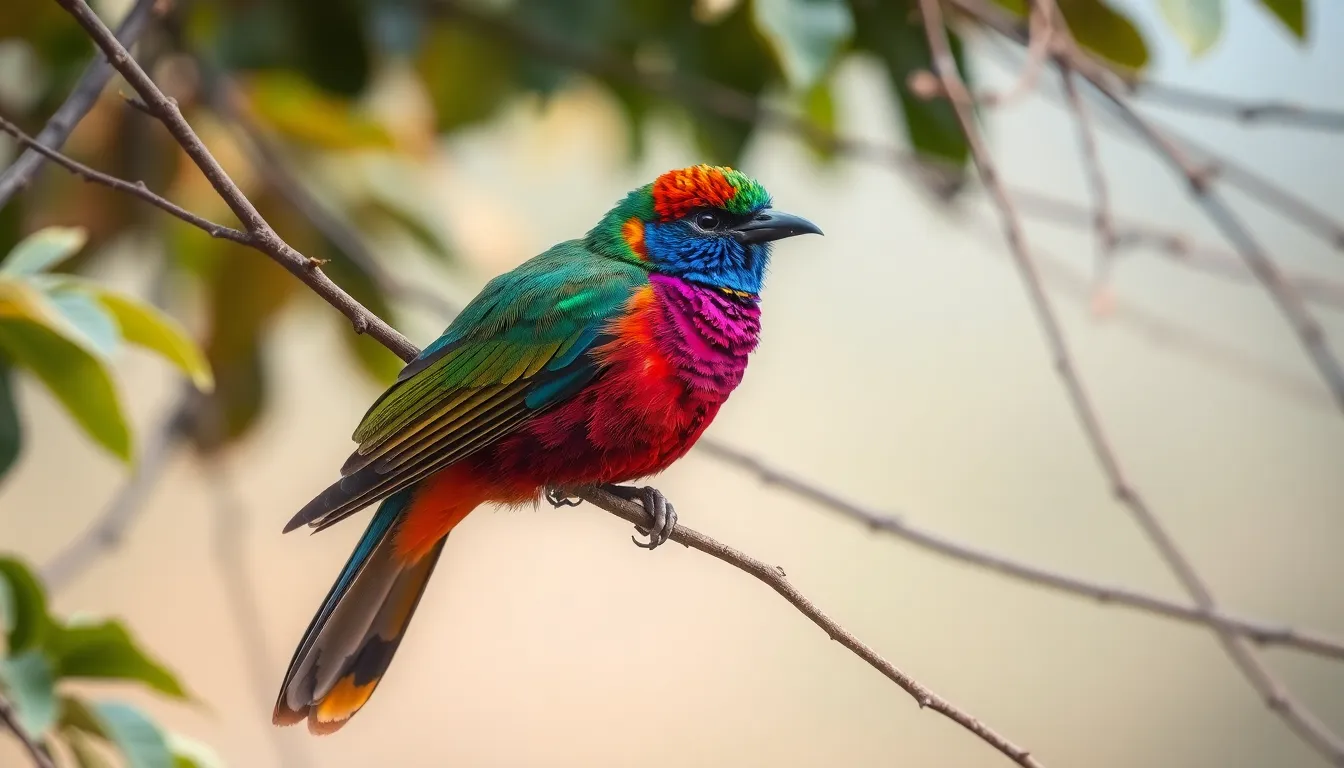
Transform your bird on branch captures into stunning masterpieces through strategic post-processing techniques. We’ll enhance the natural beauty while preserving authentic wildlife characteristics.
Color Enhancement Techniques
Vibrant feather details emerge through careful color correction and enhancement methods. We recommend starting with basic exposure adjustments, lifting shadows by 20-30% to reveal hidden feather textures while protecting highlight details in bright plumage areas.
Selective color grading amplifies the natural hues without creating artificial appearances. We boost saturation in the orange and red channels for cardinals and robins, while improving blues and greens for jay species and background foliage.
Split toning techniques add warmth to highlights and cool tones to shadows, creating depth and dimension. We apply subtle golden tones to highlight areas and soft blue undertones to shadow regions, mimicking natural lighting conditions.
HSL adjustments target exact color ranges for precise control over bird and branch elements. We increase luminance in the yellow channel to brighten goldfinch plumage, while decreasing saturation in competing background colors that distract from the main subject.
Sharpening and Detail Adjustment
Feather definition requires specialized sharpening techniques that preserve natural textures. We apply unsharp mask with a radius of 1.0-1.5 pixels and amount between 80-120%, targeting the bird’s eye and intricate feather patterns while avoiding over-sharpening.
Clarity adjustments enhance mid-tone contrast without affecting global exposure levels. We increase clarity by 15-25% on the bird subject using masking tools, bringing out individual feather details and creating better separation from the background.
Structure enhancements target fine details in both bird plumage and branch textures. We apply structure selectively at 20-40% strength to bark patterns and feather edges, avoiding areas where natural softness should remain intact.
Detail enhancement algorithms in modern software reveal microscopic feather barbules and branch surface textures. We use AI-powered sharpening tools at moderate settings, ensuring the enhancement appears natural rather than artificially processed.
Background Blur and Cleanup
Distracting elements require strategic removal while maintaining realistic depth relationships. We clone out prominent twigs, leaves, or man-made objects that compete with the primary bird subject, using content-aware fill for seamless results.
Graduated blur effects create professional bokeh appearance in cluttered backgrounds. We apply gaussian blur with varying opacity levels, strongest at the image edges and gradually reducing toward the bird’s position to maintain natural depth perception.
Color desaturation in background areas draws attention to the vibrant bird subject. We reduce background saturation by 30-50% while maintaining the bird’s natural colors, creating visual hierarchy that guides the viewer’s eye naturally.
Luminosity masking allows precise control over brightness levels in different image zones. We darken busy background areas by 0.5-1.0 stops while maintaining proper exposure on the bird and its immediate branch perch, creating dramatic contrast and visual impact.
Understand Bird Behavior for Better Bird on Branch Photos

Mastering bird behavior patterns transforms ordinary branch shots into extraordinary wildlife photography that captures authentic moments in nature. We’ll explore key behavioral insights that help photographers anticipate perfect perching opportunities and create compelling bird on branch images.
Feeding Patterns and Timing
Morning feeding frenzies occur between 6:00 AM and 8:00 AM when most bird species actively search for insects, seeds, and berries on branches. Cardinals typically spend 15-20 minutes foraging on oak branches during dawn hours, while House Finches prefer thorny shrub branches for extended feeding sessions.
Afternoon feeding windows provide excellent opportunities around 3:00 PM to 5:00 PM when birds replenish energy reserves before evening roosts. Robins often pause for 30-60 seconds on exposed branches while scanning for worms below, creating perfect photo moments. Blue Jays demonstrate predictable acrobatic feeding behaviors on thin branches, hanging upside down to reach hidden nuts and insects.
Peak activity occurs during overcast conditions when insects become more active and birds extend their foraging time on branches. Woodpeckers spend up to 45 minutes methodically working single dead branches, offering photographers multiple composition opportunities. We’ve observed that nuthatches create the most ever-changing branch poses while extracting seeds from bark crevices.
Territorial Displays and Posturing
Dominant perching positions showcase territorial birds at their most photogenic, with males selecting the highest available branches to survey their domain. Red-winged Blackbirds puff their chest feathers and spread wings while perched on cattail stems, creating dramatic silhouettes against morning skies. Northern Mockingbirds perform elaborate wing-flashing displays from exposed branch tips, lasting 10-15 seconds per sequence.
Aggressive posturing moments occur when competing birds approach established territories, resulting in striking defensive poses on branches. Hawks extend their wings fully while mantling over prey on sturdy oak limbs, creating powerful compositional opportunities. Crows gather in groups of 3-5 birds on bare winter branches, captivating in coordinated territorial calls that produce authentic behavioral shots.
Courtship displays feature elaborate branch-dancing behaviors during breeding season, with males performing acrobatic moves to attract mates. Warblers hop rapidly between thin branches while singing, creating motion blur opportunities at 1/60th second shutter speeds. We’ve found that Blue Jays perform their most animated crest displays while perched on horizontal branches 8-12 feet above ground level.
Seasonal Behavioral Changes
Spring migration patterns bring exhausted birds to predictable branch perches along established flyways between March and May. Warblers rest for 20-30 minutes on willow branches near water sources, allowing photographers to capture detailed feather patterns and colorful breeding plumage. Thrushes prefer mid-level hardwood branches for extended resting periods during peak migration weeks.
Summer nesting behaviors create opportunities to photograph protective parent birds on branches near nesting sites. Female Cardinals scout territory from exposed perches 50-75 yards from nest locations, displaying alert postures perfect for portrait shots. Swallows gather nesting materials while perched on dead branches, offering action shots of birds carrying twigs and mud.
Winter survival adaptations force birds to congregate on sheltered branches during harsh weather conditions. Chickadees fluff their feathers to twice normal size while huddled on evergreen branches, creating round, adorable subjects for close-up photography. Finches form feeding flocks of 15-25 birds on bare deciduous branches, producing opportunities for multiple bird compositions and social interaction shots.
Practice Patience and Field Techniques

Successful bird on branch photography requires patience and refined field techniques that complement your camera settings and composition knowledge. We’ll explore practical methods that help you capture natural bird behaviors without disturbing your subjects.
Quiet Observation Methods
Silent positioning forms the foundation of successful bird photography sessions. We recommend arriving at your chosen location 15-20 minutes before actively photographing to allow birds to acclimate to your presence. Moving slowly and deliberately reduces sudden motions that startle perched birds.
Breathing control minimizes camera shake during critical moments. We practice steady, controlled breathing patterns while tracking birds through our viewfinder. Holding your breath for 2-3 seconds during the shutter release creates sharper images than continuous breathing.
Equipment preparation eliminates noisy adjustments once birds appear. We preset our camera settings based on lighting conditions and keep lens caps easily accessible. Modern mirrorless cameras offer silent shooting modes that prove invaluable when photographing skittish species like Warblers or Vireos.
Natural sounds can work to our advantage during observation periods. We learn to distinguish between alarm calls and normal vocalizations to gauge bird comfort levels. Birds often resume natural behaviors within 10 minutes if we remain motionless and quiet.
Camouflage and Concealment Tips
Neutral clothing colors help photographers blend into natural environments effectively. We wear earth tones like olive green, brown, or muted gray that match surrounding vegetation. Bright colors like white, red, or yellow can alert birds to human presence from considerable distances.
Natural blinds provide excellent concealment without carrying specialized equipment. We position ourselves behind tree trunks, large rocks, or dense shrubs that obscure our silhouette while maintaining clear shooting lanes. Park benches in urban settings offer similar concealment opportunities.
Vehicle blinds create mobile observation platforms that birds often ignore. We roll down windows slowly and use beanbags or window mounts to stabilize our telephoto lenses. Cars act as effective blinds because many bird species associate vehicles with minimal threat levels.
Movement timing requires synchronization with bird behavior patterns. We make position adjustments while birds are preoccupied with feeding or preening activities. Quick movements during active behaviors draw less attention than slow movements during alert periods.
Waiting for the Perfect Moment
Behavioral prediction helps us anticipate photogenic moments before they occur. We observe individual birds for 5-10 minutes to identify patterns like head tilts, wing stretches, or feeding rhythms. Cardinals typically pause between seed cracks while Blue Jays scan surroundings between acorn manipulations.
Multiple exposure opportunities maximize our chances of capturing exceptional images. We remain in position for extended periods rather than moving frequently between locations. Patient photographers often witness territorial displays, courtship behaviors, or rare feeding interactions that create memorable photographs.
Peak activity windows concentrate bird activity into predictable timeframes throughout the day. We focus our efforts during the first two hours after sunrise when birds are most active on branches. Late afternoon periods from 4-6 PM provide secondary opportunities as birds return to roost locations.
Weather advantage timing creates unique photographic opportunities that impatient photographers miss. We stay in the field during light rain or immediately after storms when birds emerge to preen and dry their feathers. These conditions often produce dramatic lighting and increased bird activity levels.
Build Your Bird on Branch Photography Portfolio

Creating a compelling bird on branch photography portfolio requires strategic planning and consistent effort. We’ll explore essential techniques to showcase your work professionally and attract potential clients.
Creating Diverse Shot Collections
Variety strengthens your bird on branch portfolio by demonstrating technical versatility and artistic vision. We recommend capturing different species across multiple environments, from backyard songbirds like House Sparrows and Blue Jays to forest dwellers such as Pileated Woodpeckers and Wood Thrushes.
Include various composition styles within your collection to showcase technical proficiency. Wide shots establish environmental context, medium shots balance bird and habitat details, and close-ups highlight intricate feather patterns and eye expressions. We suggest maintaining a ratio of 40% medium shots, 30% close-ups, and 30% environmental compositions.
Capture different behavioral moments to add narrative depth to your portfolio. Feeding sequences show natural interactions, preening displays demonstrate intimate bird behavior, and alert poses convey the wild nature of your subjects. We recommend documenting at least five distinct behaviors for each featured species.
Incorporate diverse branch types to create visual interest and demonstrate adaptability. Flowering branches from cherry or dogwood trees provide colorful backdrops, weathered dead branches offer dramatic contrast, and moss-covered limbs create organic textures. We suggest featuring at least three different branch styles per species in your collection.
Seasonal Variety Documentation
Spring portfolios showcase breeding plumage transformations and courtship behaviors that create compelling visual narratives. We focus on species like American Goldfinches transitioning from dull winter coats to brilliant yellow breeding colors, and Northern Cardinals displaying vibrant red against fresh green foliage.
Summer documentation captures peak activity periods when birds exhibit territorial behaviors and parental care. We recommend photographing species like Red-winged Blackbirds defending nesting territories and American Robins collecting nesting materials from nearby branches.
Autumn collections highlight migration patterns and molting processes that offer unique photographic opportunities. We target species like various warbler species during fall migration, showcasing their subtle plumage changes against colorful autumn leaves and bare branches.
Winter scenes provide stark contrasts and survival behaviors that create dramatic portfolio pieces. We focus on hardy species like Black-capped Chickadees and Northern Cardinals against snow-covered branches, emphasizing resilience and adaptation themes.
Storytelling Through Image Sequences
Sequential storytelling elevates bird on branch photography from single captures to compelling visual narratives. We create three to five image sequences that document complete behaviors, such as a hawk’s hunting approach, strike, and feeding sequence on the same perch.
Behavioral progression sequences demonstrate your understanding of avian psychology and patience as a photographer. We recommend documenting arrival, assessment, feeding, and departure behaviors, showing how birds interact with their chosen perches throughout different activities.
Environmental context sequences showcase the relationship between birds and their habitat across different times and conditions. We capture the same species on identical branches during dawn, midday, and dusk lighting conditions, demonstrating how environmental factors influence bird behavior and image aesthetics.
Interaction sequences document multiple species sharing branch spaces, creating ever-changing storytelling opportunities. We photograph territorial disputes, peaceful coexistence, and feeding hierarchy displays that reveal complex social behaviors within bird communities.
Conclusion
The industry of bird on branch photography offers endless opportunities to capture nature’s perfect moments. We’ve explored every aspect from technical settings and equipment choices to understanding behavior and mastering composition techniques.
Success in this field requires patience dedication and a genuine appreciation for our feathered subjects. By combining proper gear with field knowledge and post-processing skills we can create images that tell compelling stories about the natural industry.
Remember that each bird species brings unique challenges and rewards. The more time we spend observing and photographing these creatures the better we’ll understand their patterns and preferences.
Start building your portfolio today and don’t forget that the best bird photographs often come to those who wait quietly and observe carefully.
Frequently Asked Questions
What camera settings work best for bird on branch photography?
Use aperture settings of f/5.6 to f/8 for sharp focus across the bird and branch. Set shutter speed to 1/500th second or faster to freeze bird movements – active birds may require speeds up to 1/1000th second. Adjust ISO based on lighting conditions; modern cameras handle higher ISO values well, typically ranging from 400-3200 depending on available light.
What type of lens is recommended for photographing birds on branches?
Telephoto lenses ranging from 300mm to 600mm are ideal for bird photography. Popular choices include Canon’s EF 300mm f/4L IS USM and Nikon’s AF-S 300mm f/4E PF ED VR for their sharpness and image stabilization. Budget-conscious photographers can use versatile zoom lenses. The longer focal length allows you to maintain distance while capturing detailed shots.
When is the best time of day to photograph birds on branches?
The golden hour, shortly after sunrise and before sunset, provides the best lighting conditions. Early morning (dawn to 10 AM) is particularly excellent as birds are most active during feeding time. Overcast conditions offer even illumination without harsh shadows. Avoid harsh midday sunlight, but if necessary, seek open shade areas for better results.
Where are the best locations to find birds on branches?
Urban parks and gardens offer accessible spots with diverse bird species – visit early morning for optimal activity. Natural wildlife habitats like forest edges, wetlands, and woodland areas provide excellent opportunities. During migration seasons, visit known hotspots where birds concentrate. Research local birding locations and check recent sighting reports for the best results.
How can I improve the composition of my bird on branch photos?
Apply the rule of thirds by positioning birds and branches along the grid lines for natural balance. Use negative space with clean backgrounds to emphasize your subject. Create depth with diagonal branch placement and layered compositions. Consider branch thickness and texture as compositional elements, ensuring they complement rather than distract from the bird.
What post-processing techniques enhance bird on branch images?
Use selective color grading and HSL adjustments to enhance natural colors while maintaining authenticity. Apply targeted sharpening to feather details and eyes for better definition. Clean up distracting background elements and enhance bokeh effects. Adjust exposure and shadows to bring out detail in both the bird and branch textures without over-processing.
How does understanding bird behavior improve photography results?
Knowing feeding patterns helps you anticipate peak activity times – typically early morning and late afternoon. Understanding territorial displays and courtship behaviors allows you to capture dynamic moments. Recognizing seasonal changes like migration and nesting periods creates unique photo opportunities. This knowledge helps you predict bird movements and position yourself for better shots.
What equipment is essential for bird on branch photography?
A telephoto lens (300-600mm), stable tripod (preferably carbon fiber), and camera with fast autofocus system are essential. Look for cameras with high-resolution sensors, fast burst rates, and weather sealing. Specialized tripod heads enable smooth tracking of moving subjects. Don’t forget spare batteries and memory cards for extended shooting sessions.
How can I approach birds without disturbing them?
Arrive early to allow birds to acclimate to your presence. Move slowly and avoid sudden movements. Wear neutral-colored clothing and consider using natural blinds for concealment. Practice controlled breathing to minimize camera shake. Time your movements with bird behavior patterns, and always maintain respectful distances to avoid causing stress to wildlife.
What makes a strong bird photography portfolio?
Include diverse shot collections showcasing various compositions, lighting conditions, and behavioral moments. Document seasonal variety to show birds throughout the year. Create storytelling sequences that show bird behavior and habitat interactions. Focus on technical quality while maintaining artistic vision. Consistency in style and regular updates help build a professional portfolio that attracts potential clients.

